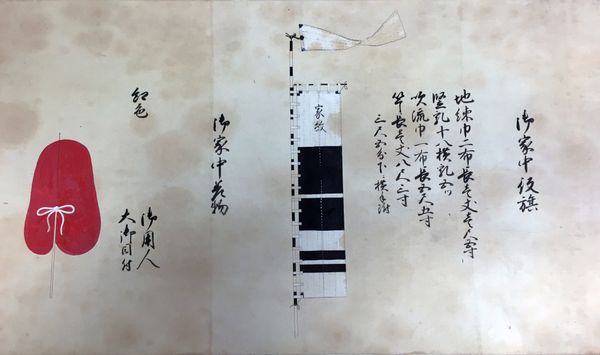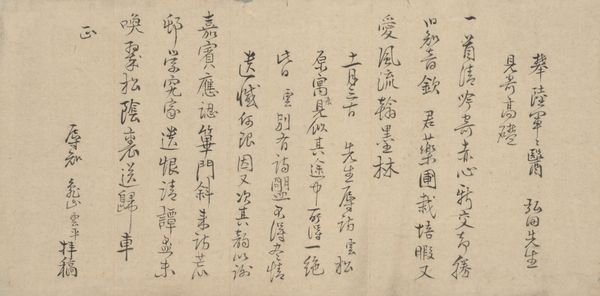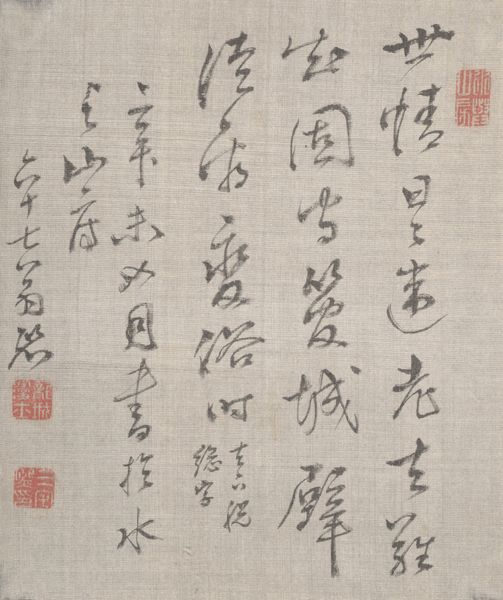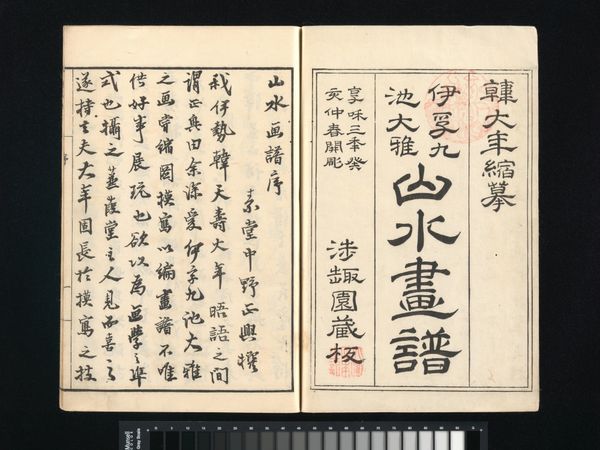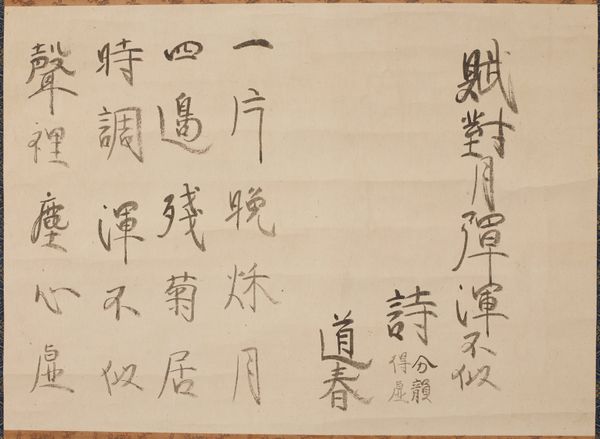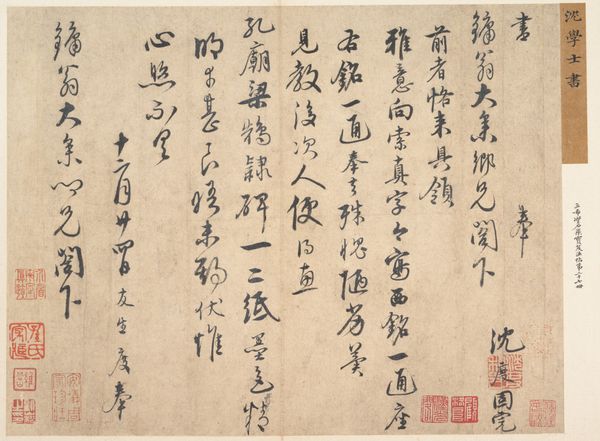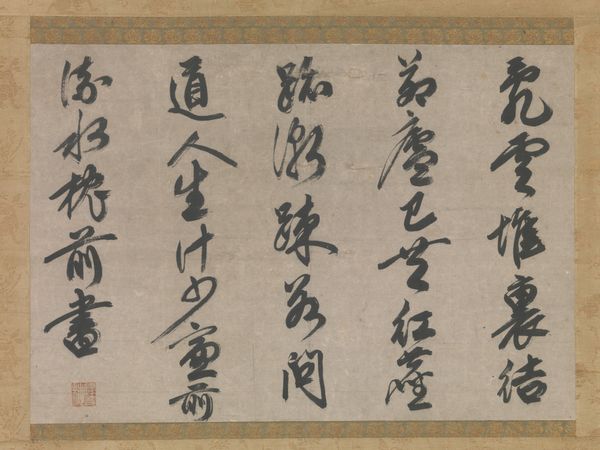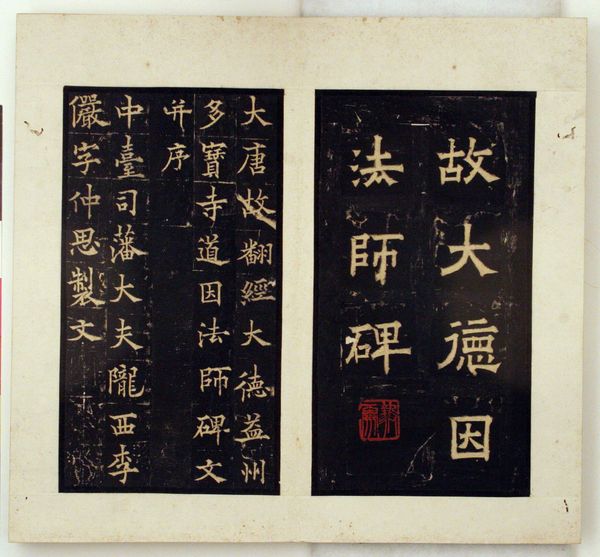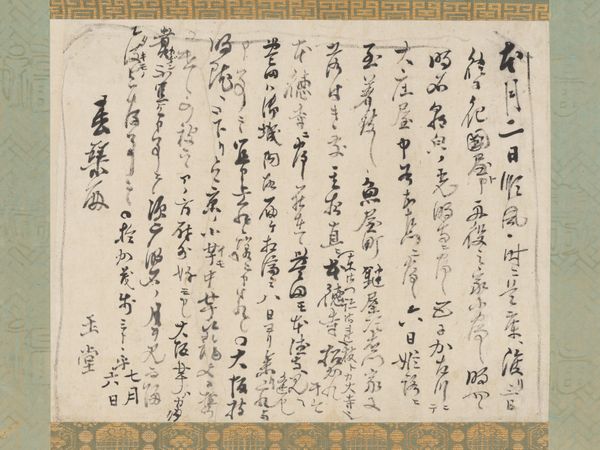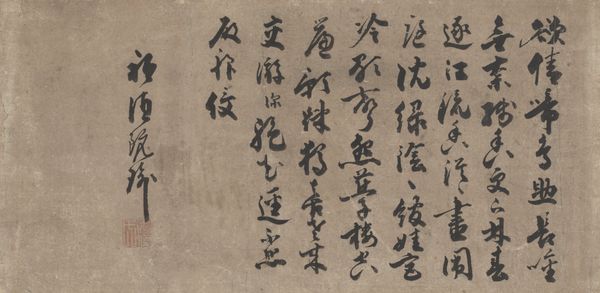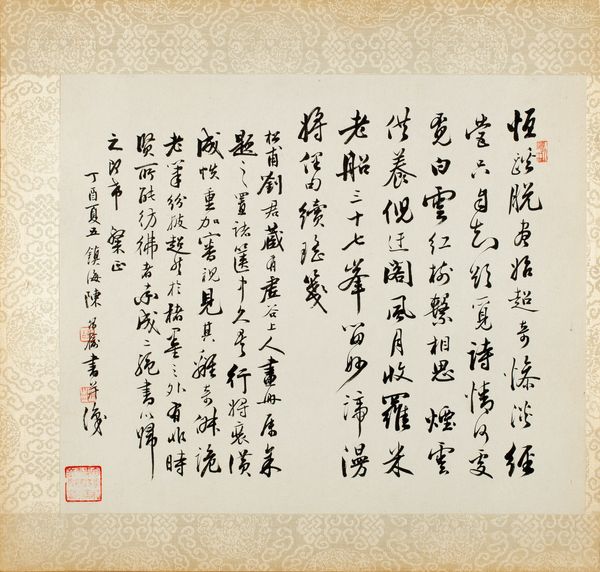
drawing, paper, ink
#
drawing
#
narrative-art
#
asian-art
#
paper
#
ink
#
calligraphy
Dimensions: L. 37 ft. 4 in. (11.4 m); W. 11 in. (27.9 cm)
Copyright: Public Domain
Editor: Here we have a piece called "Scroll," made sometime between 1775 and 1825 by an anonymous artist. It's ink on paper, currently held at the Metropolitan Museum of Art. At first glance, the stark black calligraphy against the aged paper gives it a feeling of solemnity, almost like viewing sacred texts. What stands out to you about this work? Curator: I’m immediately drawn to the way this scroll operates as a cultural memory. Calligraphy itself is symbolic, connecting to a tradition of knowledge and artistry. Consider, each character isn't just a word, but a vessel holding centuries of cultural and philosophical weight. What do you think the repetition of form implies? Editor: Perhaps that it is one continuous artwork meant to be seen together or parts of something larger. Curator: Exactly! And notice how some of the individual scrolls are arranged in such a way. To our contemporary eyes it seems static but, it can be read left to right, much like a written page or seen vertically, as four complete separate forms. The symbolic depth in these texts indicates layers of meaning, speaking not only to individual devotion but to collective understanding. Editor: That's a fascinating point about it holding cultural and philosophical weight. Curator: Indeed! How do you perceive the visual impact of the brushstrokes and their arrangement on paper? Does it speak of any particular feeling or belief? Editor: I think I am beginning to see these scrolls as pieces of shared cultural DNA. It definitely offers me a greater appreciation for the continuity of traditions encoded within visual forms. Curator: Precisely. It is through such symbols that societies remember, reiterate, and redefine their identities.
Comments
No comments
Be the first to comment and join the conversation on the ultimate creative platform.
